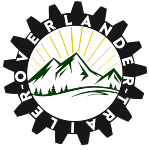Designing a camper that you can tow involves careful planning to ensure that the camper is both functional and safe for towing. Here are some key steps and considerations to keep in mind when designing a towable camper:
1. Determine Your Requirements:
- Define your camping needs, including the number of occupants, sleeping arrangements, cooking facilities, storage space, and amenities you want in your camper.
2. Calculate Weight and Size:
- Calculate the maximum weight your towing vehicle can handle based on its towing capacity. Consider the combined weight of the camper, occupants, gear, and other supplies.
- Ensure the dimensions of the camper are suitable for safe towing and conform to legal limits.
3. Choose a Suitable Trailer Type:
- Decide on the type of trailer that best suits your needs: teardrop, box-shaped, pop-up, A-frame, or custom design.
- Consider the aerodynamics of the trailer to reduce wind resistance and improve fuel efficiency.
4. Plan the Interior Layout:
- Design the interior layout to optimize space utilization and accommodate your desired amenities.
- Arrange sleeping areas, kitchen facilities, dining space, storage, and bathroom (if applicable) in a functional and efficient manner.
5. Select Materials:
- Choose lightweight but durable materials for the camper’s construction to keep the weight manageable while ensuring structural integrity.
- Consider using materials that can withstand outdoor conditions and road vibrations.
6. Focus on Weight Distribution:
- Distribute the weight evenly within the camper to maintain proper weight distribution when towing. This helps ensure stability on the road.
7. Electrical and Plumbing Systems:
- Plan the electrical system, including lighting, outlets, and appliances. Consider using energy-efficient options and possibly integrating solar panels for off-grid power.
- Design the plumbing system if your camper includes a bathroom or kitchen. Ensure proper water storage, plumbing connections, and waste disposal.
8. Suspension and Tires:
- Choose a suitable suspension system and tires that can handle the weight of the camper. This is crucial for safe towing and a comfortable ride.
9. Safety Features:
- Install safety features like trailer brakes, breakaway systems, and proper lighting to comply with towing regulations and ensure road safety.
10. Storage Solutions:
- Incorporate ample storage space for gear, equipment, and personal belongings. Efficient storage can help keep the camper organized and clutter-free.
11. Consult Experts:
- Seek advice from professionals, such as engineers, RV builders, or experienced DIY campers, to ensure your design is safe and feasible.
12. Test the Design:
- Before finalizing the design, consider creating a prototype or mock-up to visualize the space and make adjustments if needed.
13. Legal and Regulatory Compliance:
- Familiarize yourself with local regulations and requirements for towing campers. Ensure your design adheres to safety standards and weight limits.
Remember that a well-designed camper should not only be functional but also safe and roadworthy. Take your time during the planning and design phases to ensure that your camper meets your needs while being suitable for towing behind your chosen vehicle.

misoprostol online order – where can i buy xenical order diltiazem 180mg pill